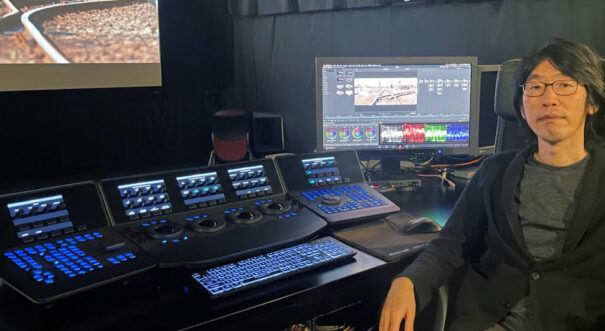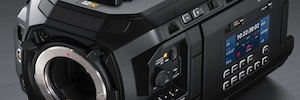Hideaki Anno’s hit movie ‘Shin Kamen Rider’ color-grades with DaVinci Resolve Studio
DaVinci Resolve Studio and DaVinci Resolve Advanced Panel (Blackmagis Design) were used to grade Hideaki Anno’s hit film ‘Shin Kamen Rider’.
The film was graded by Seiji Saito, DI producer and colorist at Toho Studios’ DI Factory.
“Shin Kamen Rider” was produced to commemorate the 50th anniversary of the superhero TV series Kamen Rider which has been broadcasting continuously since 1971. Since its release in March, the film has become the highest grossing of the dozens of Kamen Rider films. It was written and directed by Hideaki Anno, an anime creator and a big fan of the original Kamen Rider series, and stars Sousuke Ikematsu, Minami Hamabe and Yu Emoto.
The film was graded at DI Factory in Tokyo, a post production facility located within Toho Studios, which includes suites for film screenings, as well as a suite for television and streaming services. Both of these suites are equipped with DaVinci Resolve Studio, DaVinci Resolve Advanced Panel and DaVinci Resolve Micro Panel.
“At DI Factory, we handle all processes related to video, not just editing or grading. We take advantage of being in the Toei shooting studio to check test shots and give advice on makeup and costume colors. We also are involved in filmmaking from pre production on. I started my career at a conventional post production studio, but I always wanted to get close to a shooting set. I would say the way I work now is very close to my ideal,” said Saito. He has worked with Hideaki Anno on all of the “Shin” series, including Shin Godzilla そして Shin Ultraman, which are the reboots of tokusatsu (special effects) superhero TV shows, as well as the “Shin Evangelion (Evangelion 3.0 + 1.0 Thrice Upon a Time)” animated feature film.
Color accuracy
Saito continued, “Anno san never compromises in what he creates. For example, he brought in the helmets of Rider No. 1 and No. 2 and asked me to reproduce the colors exactly. Anno san himself is a huge fan of the first Kamen Rider series, so I pursued that nostalgic feeling. The Kamen Rider series of the time were shot on 16mm film. The film sensitivity at that time was low, so the night scenes were really dark and looked very scary, and there were so many shots with blood, even though it was a TV show for children. Since this film was an homage to the original series, I took the approach of recreating that dark look.”
In this film, as in the previous Shin series, various types of cameras were used. “The entire film was shot with multiple cameras, using any cameras available on set. We also used unique angles that are possible with small cameras. Even after the film was cranked up, additional material continued to come in! I would say it was not really a conventional way to make a feature film,” Saito said.
He continued: “The great thing about using DaVinci Resolve for this project is that I could bring the color of footage from multiple cameras up to a standard line. Because of the Color Space Transform, even though I was using many different cameras, I replaced all of them with the color space of the main camera. This meant that I only had to prepare one base LUT. When I worked on Shin Godzilla そして Shin Ultraman,” I matched the colors using only my eyes, which was a lot of work!”
Saito also appreciates DaVinci Resolve’s native support for a variety of codecs. “What is the most important factor for me in a grading tool is if it supports the latest camera RAWs or not,” he said. “Among all grading systems, DaVinci Resolve is the fastest in supporting various codecs. If you can’t import footage natively, it takes a lot of time and effort to convert them, and doubles the amount of data taking up more storage space. Being able to import footage from the latest cameras also makes grading more efficient.”
“I believe that to improve the quality of a film, all of the creative processes, such as shooting, editing and sound, must work together to create a synergistic effect. Grading is just one of them. As part of Toho Studios, I like to contribute not only as a colorist, but also interactively with other filmmaking technologies to improve the overall quality of a film. DaVinci Resolve was originally a grading system, but it has evolved over the years with the addition of editing, Fusion and Fairlight features. It’s been quite a surprise to longtime users, but because Blackmagic Design has been free from established concepts and has linked various tools together in DaVinci Resolve, it has become such a popular software around the world. We, as users, can also make effective use of these technologies by being aware of its evolution beyond the existing framework. With the evolution of AI, there will continue to be more technologies that streamline workflows, so I feel that having multiple skills will be essential in the future,” concluded Saito.
¿Te gustó este artículo?
Suscríbete a nuestro RSSフィード Y no te perderás nada.

















